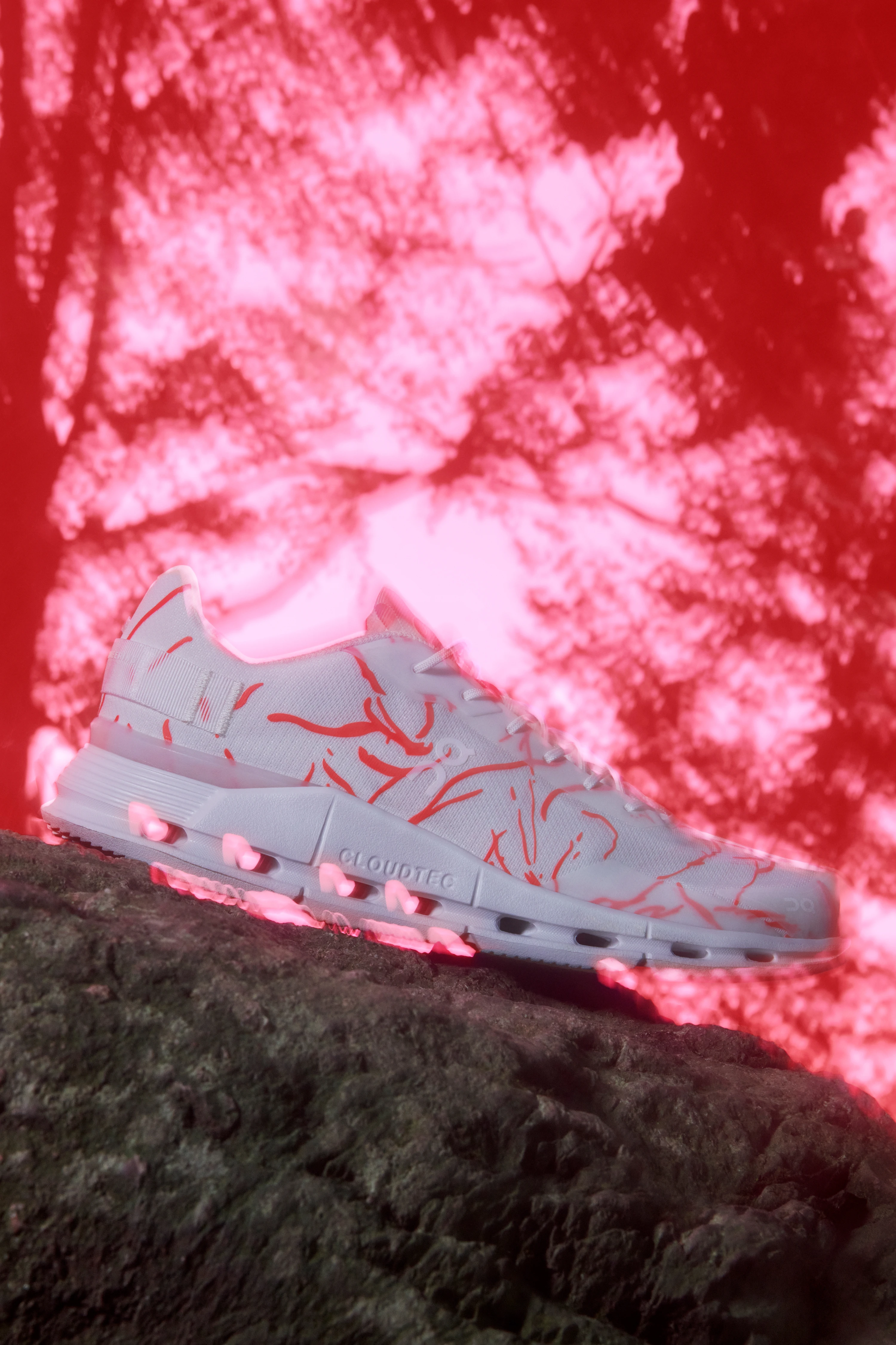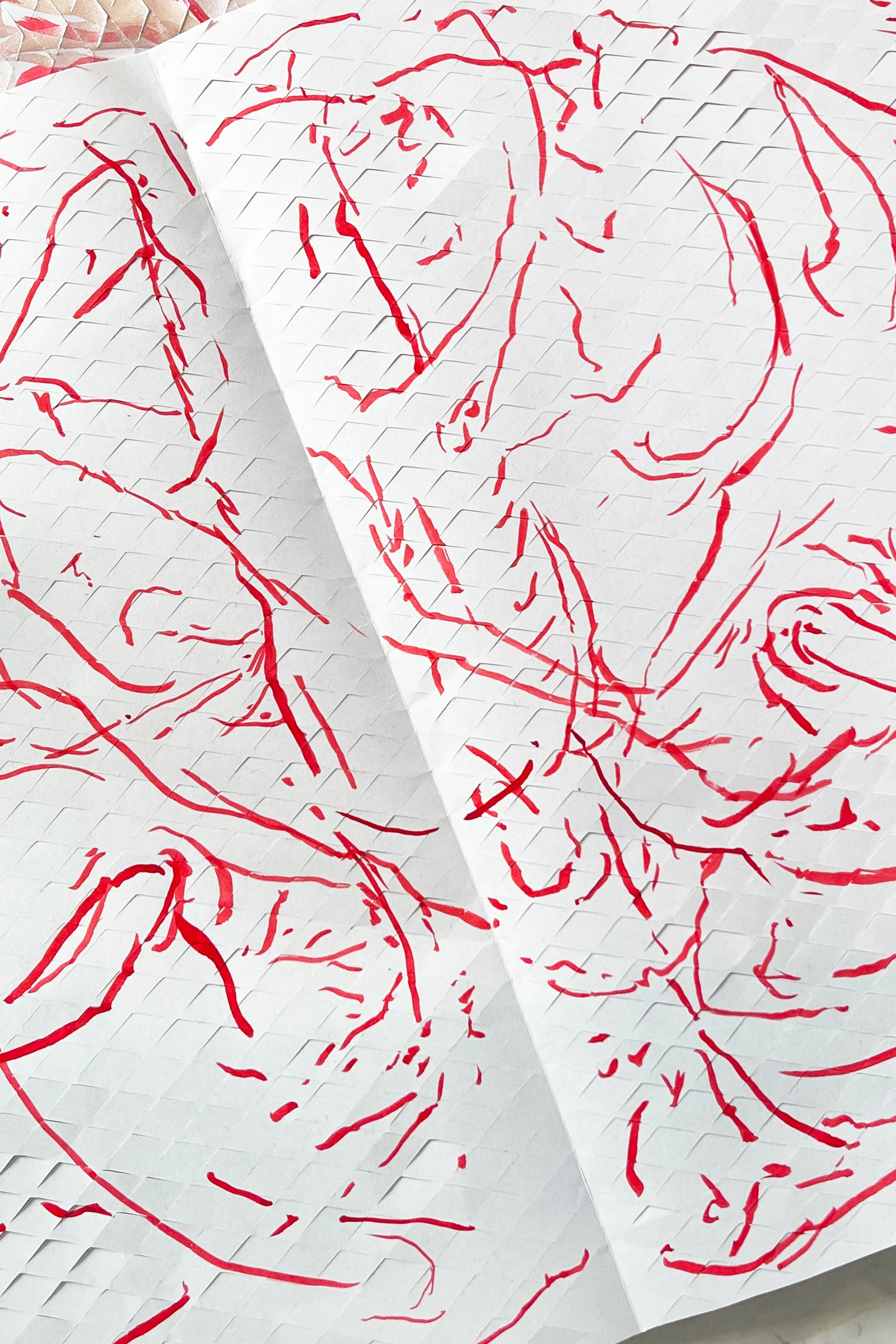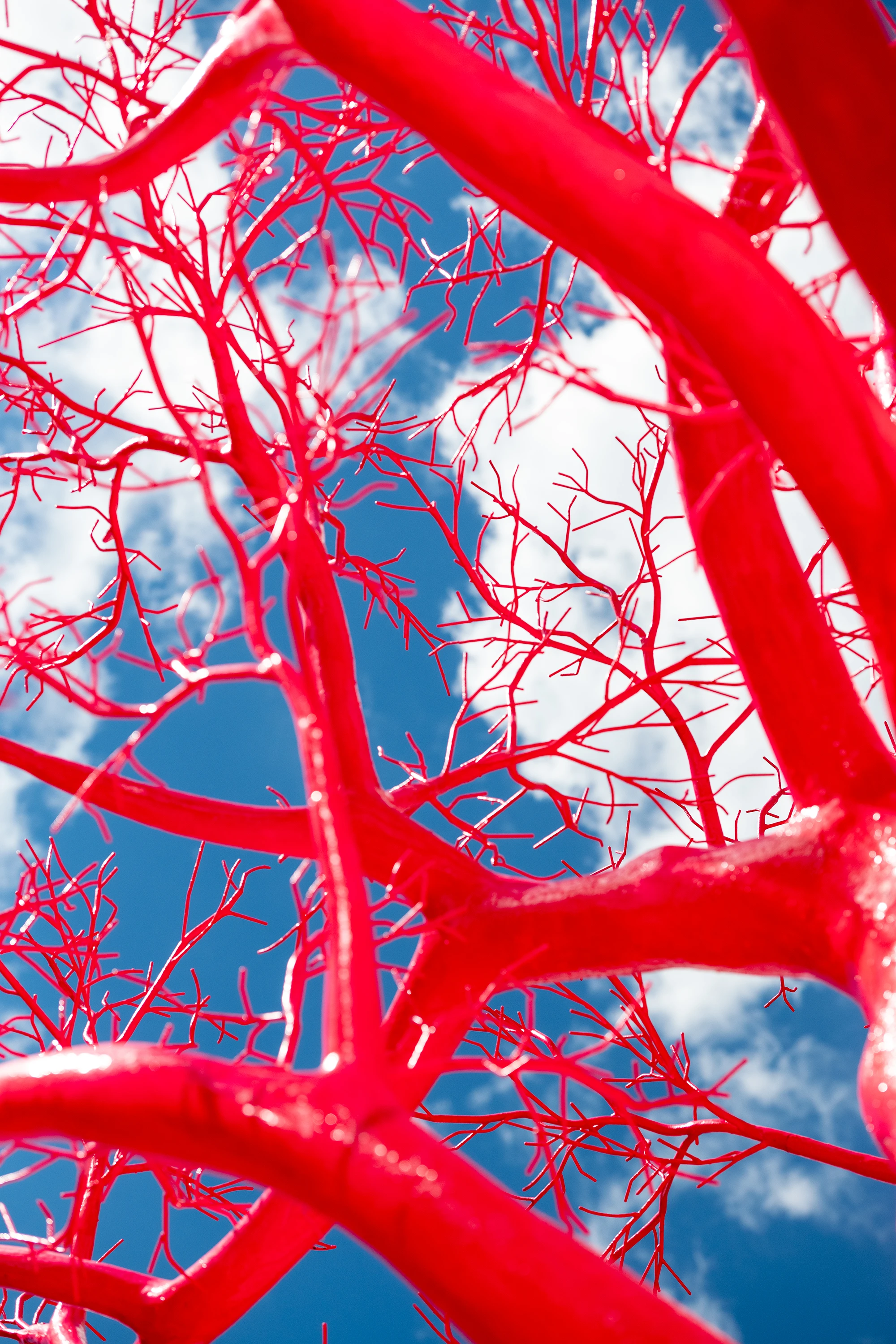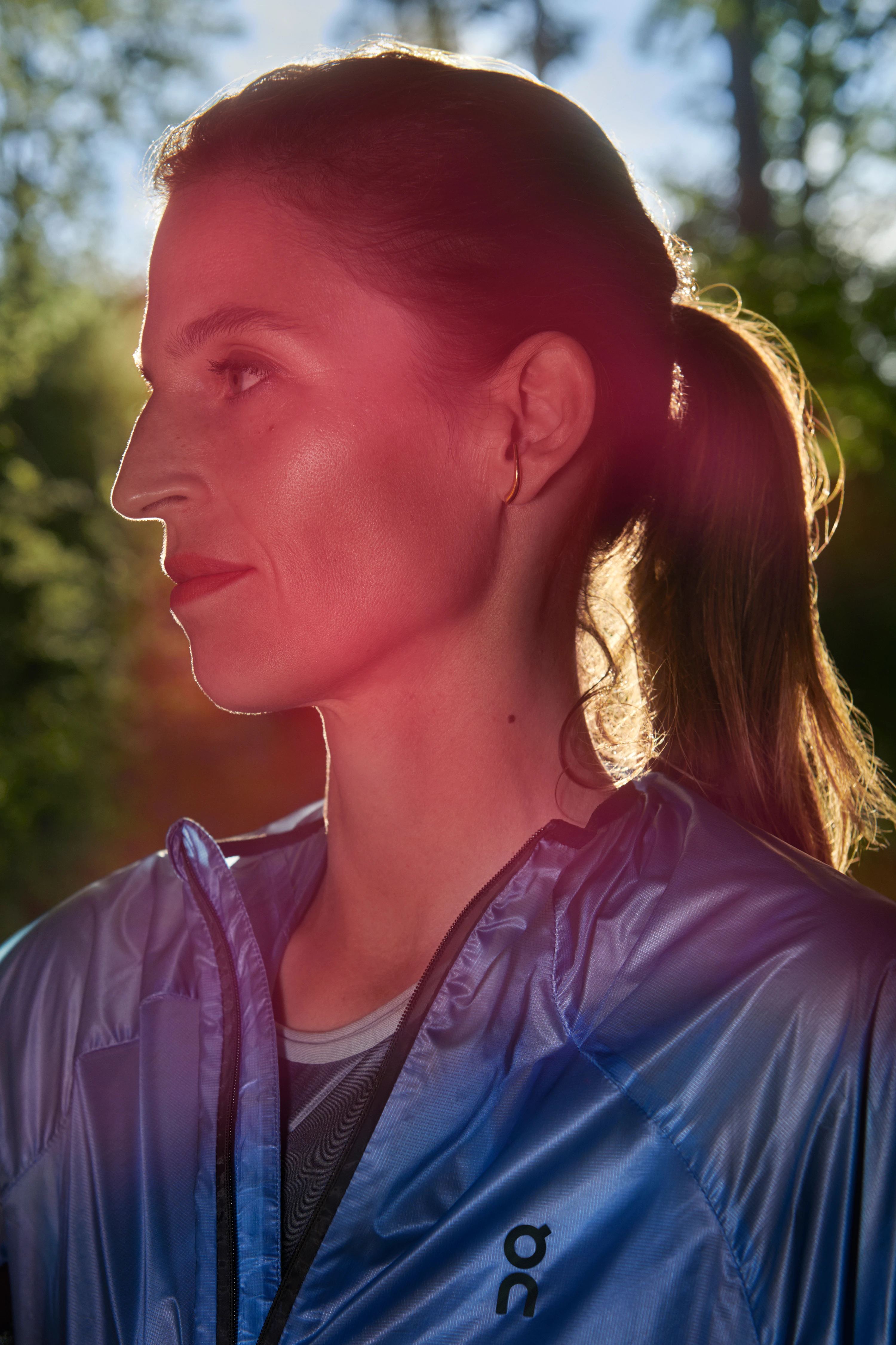Pamela Rosenkranz on her NYC High Line sculpture.
Rosenkranz’s Old Tree sculpture on the High Line in New York City.
Words by Milly Burroughs. Photography by Marton Perlaki and Timothy Schenck.
“What does it mean to be human? Where do we come from, and where are we going? How can we shape a meaningful community in a fragmented world?” These are the questions Swiss multimedia artist Pamela Rosenkranz asks with her art.
Born in 1979, the Zurich-based artist’s conceptual practice seeks to explore the phenomenon of perception. In 2022, Rosenkranz won the third High Line Plinth commission and was selected from a longlist of 80 artists to pierce the New York City skyline with her artificial tree sculpture “Old Tree”. Artists from around the world can submit projects for one of the few public spaces in the city that is dedicated to contemporary art installations. It places ambitious artworks into the everyday landscape for the public, posing thought-provoking questions usually found on gallery walls to passing commuters, workers and tourists.
As is typical of Rosenkranz’s work, Old Tree’s vivid monochrome red-pink stops those who see it in their tracks. “The situation on the High Line invites people to linger with seating. Public space is an important resource that art can help protect,” Rosenkranz explains. “I hope that shared responsibility for land, water and air — and, in this context, space — leads to more understanding and care. Art can activate a space and can function as an invitation for exchange.” Recognizing the need for such artistic explorations, On is committed to investing in the art world and has partnered with Rosenkranz and the international art fair Art Basel to produce a limited edition of the Cloudnova Form shoe. The shoe features a digital graphic created from one of Rosenkranz’s original sketches for the development of Old Tree.
Having graduated with an MFA from the Academy of Fine Arts in Bern, Switzerland, Rosenkranz completed her studies at the Department of Comparative Literature at the University of Zurich in 2005. She later took part in the prestigious Rijksakademie Independent Residency Program in Amsterdam, Netherlands, which she finished in 2012.
Rosenkranz’s artistic approach is often discussed in the context of speculative realism; a movement of philosophical thinking that fundamentally resists ideas of human-centric thinking. She has collaborated with two of the movement’s most pertinent thinkers, Iranian philosopher Reza Negarestani and London-based philosopher Robin Mackay, whose texts feature in Rosenkranz’s 2012 monographic catalog No Core.
Rosenkranz’s artistic language is accented with elements from the fields of philosophy, science, pop culture and mythology. Contextualized by a world addicted to the torment of collective navel-gazing, it’s no surprise that her societally introspective work has captured the attention of academic and cultural commentators alike. In 2015, Rosenkranz was selected to represent Switzerland at the 56th Venice Biennale. The artist’s imagining of the Swiss Pavilion, Our Product, saw Rosenkranz confront visitors with the concept of humanity as a singular object, decentralizing and reducing it to its most homogenous form. Adorning a provocative subject with a glossy aesthetic devoid of personality, the artist filled the pavilion with a monochrome liquid created as an abstract representation of a single skin tone.
Old Tree creates a juxtaposition between the urgency of the city and the glacial growth of a humble tree. While the installation catches the eye in luminous red and pink, a number of Rosenkranz’s best-known works address the audience with bold blue hues, with particular reference to those synonymous with French artist Yves Klein. Rosenkranz’s 2011 video installation The Death of Yves Klein, paintings in the 2015 series My Yves Klein Blue (Approaching), 2016’s Blue Runs, and light installations such as 2017’s Alien Culture at GAMeC Bergamo center reflections on the early evolutionary and biological formation of the eye’s receptors for blue. Most recently, the 2023 exhibition Alien Blue, currently on display at Berlin’s Sprüth Magers gallery, comments on the circadian-rhythm-disrupting blue light emitted by the technological devices that punctuate our day-to-day living.
Beyond her fascination with Klein, Rosenkranz cites the late French-American artist Louise Bourgeois as an influential creative force in her life, remembering an intimate personal encounter at Bourgeois’ New York City home. Meeting the renowned sculpture and installation artist had a profound impact on Rosenkranz and her sense of self.
“I met Louise Bourgeois in my twenties when I was still living in New York. She was in a state of severe insomnia, working at her home in Chelsea. She was looking at my sketchbook from art school, holding two braided balls of ceramic in her hands, balancing, demonstrating how everything was intertwined. She said that I was very sure of myself, which didn't seem so to me at that time. She gave me a strong impulse not to take myself too seriously. Her human urgency and poetic power were incredibly inspiring to me.”
Bourgeois’s explorations of domesticity, family, sexuality, the body, death and the unconscious appeal to the broad and unbridled nature of human emotion, while a central focus of Rosenkranz’s work is the investigation of neurological reactions and psychotropic phenomena (behavioral indicators signaling change in well-being and social function) that impact our perceptions. To create her 2014 work Sexual Power (Viagra Paintings), the artist intentionally took the erectile dysfunction drug of the same name and painted large-scale aluminum panels that writer and professor Simon Baier describes as “a stand-in for the anthropomorphic” [ascribing human characteristics to nonhuman things].
Much of Rosenkranz’s work can be read as comments on anthropomorphism, with examinations of attempts to domesticate the natural world. Firm Beings — an ongoing series started in 2009 — sees the artist filling the familiar plastic bottles of well-known water brands with a silicone substance known as “Dragon Skin”, commonly used for prosthetics in cinema. Referencing singular skin tones as faceless representations of human demographics, each fleshy, headless, polymer torso takes on the role of an abstracted person, defined only by its brand and slogans. The work comments on the human-centric value assigned to nature under capitalist economies.
Unveiled in May 2023 on New York City’s High Line — a popular urban greenway repurposed from a former railway line — Old Tree is the latest in Rosenkranz’s studies of how psychological experiences shape our understanding of our existence.
“The inspiration was to build a tree as a metaphor of the spiraling clock; one that is tied to the events that the human nervous system is based on. I am fascinated by how science — combined with insights from history, religion, and mythology — helps us develop an idea of a deep past and a deep future, which might further alter or redefine our relationship to nature. The idea for Old Tree was running on questions such as: what is growth? What is life? What is human to us?”
Rosenkranz shares that, when she’s not making art, she enjoys the meditative and intentional act of running. Speculating on how we as humans could relinquish our relentless quest to tame nature. “We could start with a questioning of our state of being, a connection to our feelings and an awareness of our body.”
“Part of the creative process [when envisioning Old Tree] was to make an actual, real, symbol — a tree of life in flesh — which has been present in many cultures for millennia,” Rosenkranz explains.“Fundamentally, it was inspired by the complex beauty and depth of nature. If we now understand how trees not only communicate with each other over long distances through a complex system of fungi, but also exchange nutrients and protect each other as families [the so-called “Wood Wide Web", as described by Canadian scientist Suzanne Simard], we may also better realize how intricately we humans are interwoven with the world and the humans among us as a kind.”




